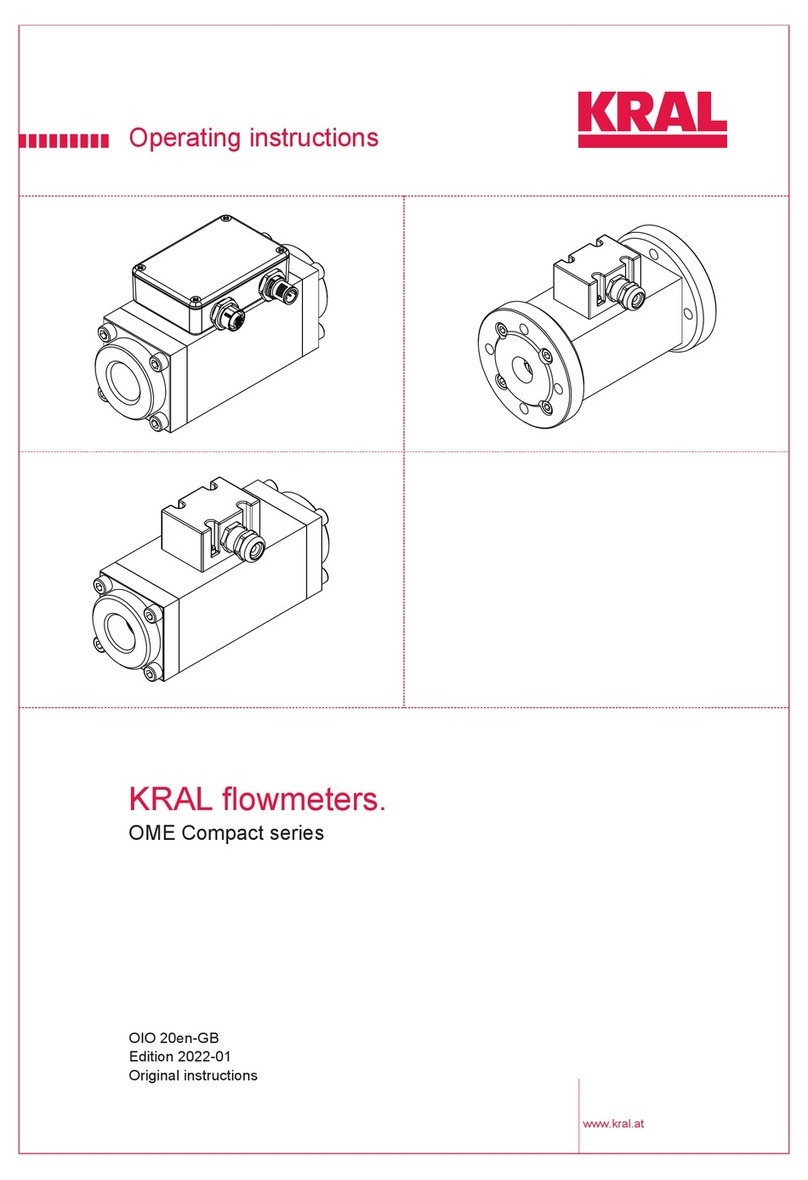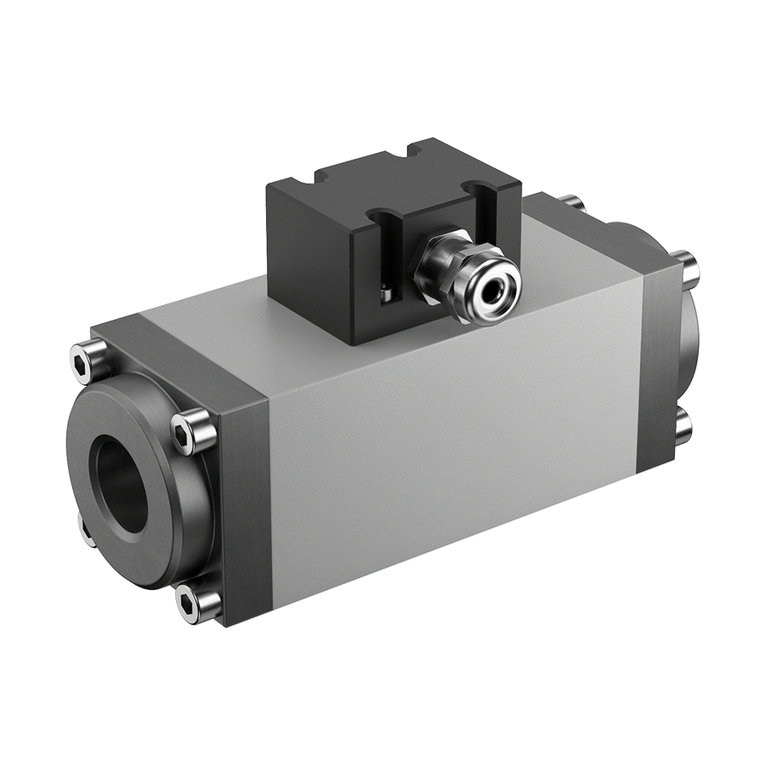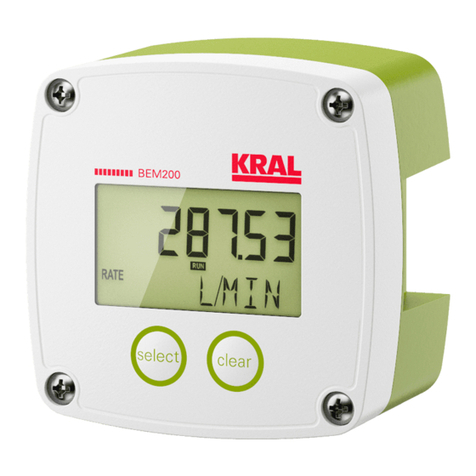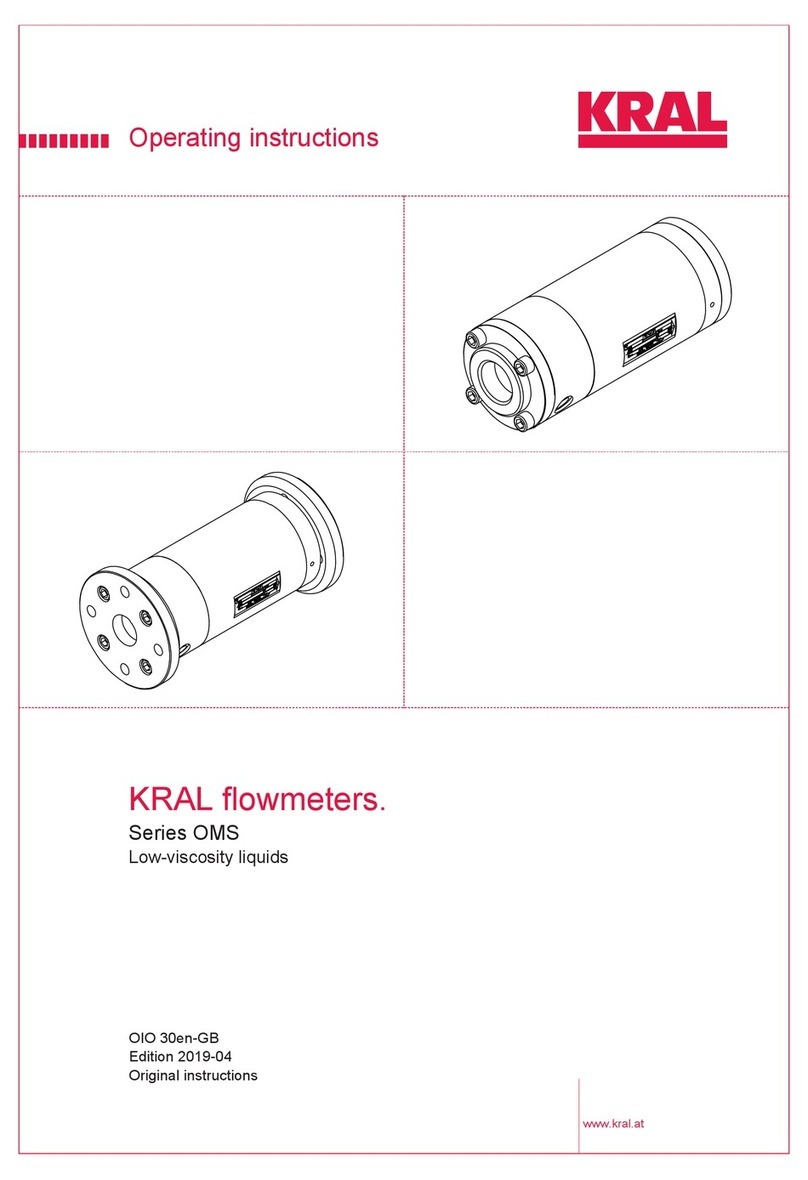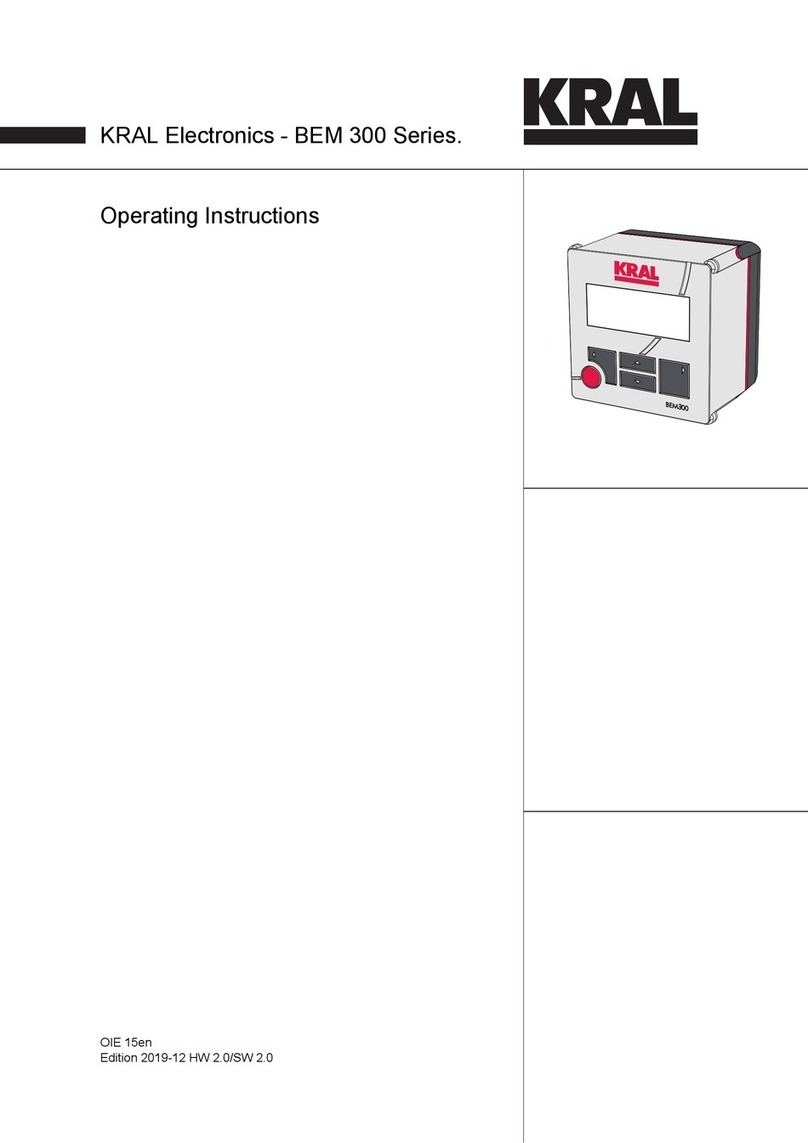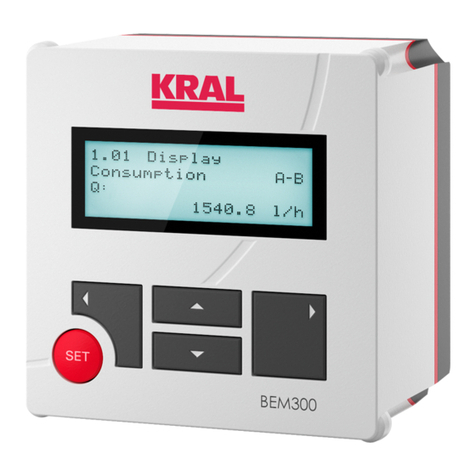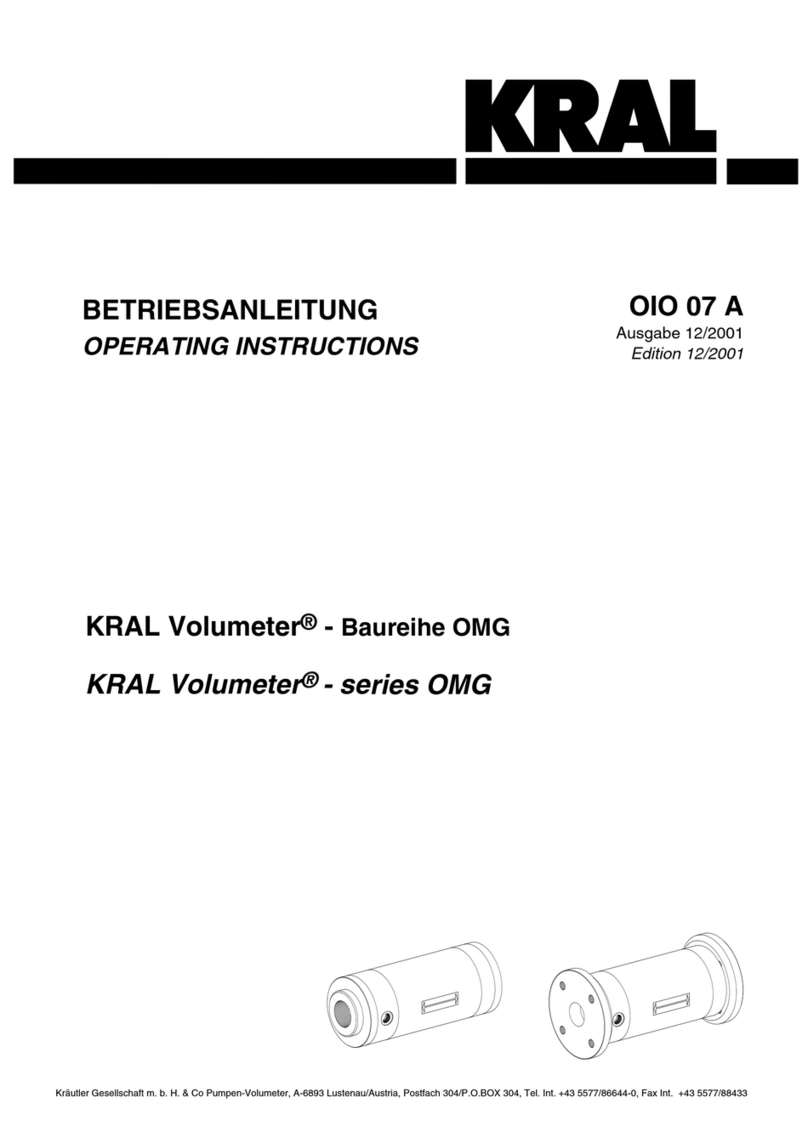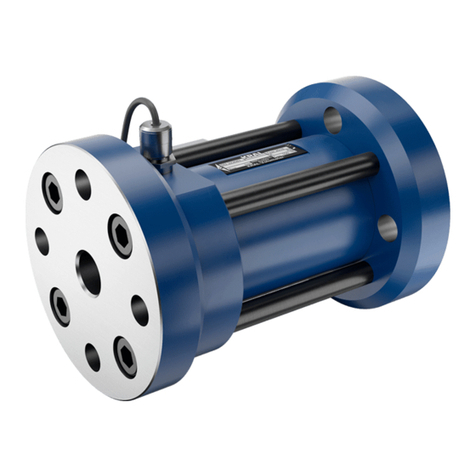
Operating Instructions OIE 12en Edition 2019-02 3
Table of content
KRAL Electronics – Series BEM 500
□Menu 1: Display 34
▪
1.01 Consumption 34
▪
1.02 Total with reset 34
▪
1.03 Volumeter A 35
▪
1.04 Volumeter A Total with reset 35
▪
1.05 Volumeter B 35
▪
1.06 Volumeter B Total with reset 35
▪
1.07 Batch quantity 35
▪
1.08 Flow direction change Volumeter A 36
▪
1.09 Flow direction change Volumeter B 36
▪
1.10 Reset bypass and
collective error message 36
▪
1.11 Setting display brightness 36
▪
1.12 Setting display contrast 36
▪
1.13 Setting select language 36
□Menu 2: General settings 36
▪
2.01 Enable password 36
▪
2.02 Change password 37
▪
2.03 Select mode 37
▪
2.04 Select temperature X 37
▪
2.05 Select unit rate 37
▪
2.06 Select unit total 37
▪
2.07 Select unit temperature 37
▪
2.08 Select unit density 37
▪
2.09 Select density determination 38
▪
2.10 Number of decimal places 38
▪
2.11 Display start message 38
▪
2.12 Function pick up 38
▪
2.13 Function pulse inputs 38
▪
2.14 Link channel 38
▪
2.15 Threshold value A-B 38
▪
2.16 Averaging display rate 39
▪
2.17 Deactivate alarm messages 39
▪
2.18 Maximum flow rate error message 39
▪
2.19 Minimum temperature Volumeter 39
▪
2.20 Maximum temperature Volumeter 40
▪
2.21 Reset to factory settings 40
□Menu 3: Output settings 40
▪
3.01 Function analog output 40
▪
3.02 Allocation analog output 1 40
▪
3.03 Scale analog output 1 40
▪
3.04 Allocation analog output 2 40
▪
3.05 Scale analog output 2 40
▪
3.06 Averaging analog output 41
▪
3.07 Function pulse output 41
▪
3.08 Allocation pulse output 1 41
▪
3.09 Scale pulse output 1 41
▪
3.10 Allocation pulse output 2 42
▪
3.11 Scale pulse output 2 42
▪
3.12 Pulse output pulse width 42
▪
3.13 Function relay 1 42
▪
3.14 Limit value bypass 43
▪
3.15 Delay bypass 43
▪
3.16 Waiting period repeat bypass 43
▪
3.17 Relay 1 switch 43
▪
3.18 Relay 2 switch 43
▪
3.19 Address Modbus 44
□Menu 4: K-factors Volumeter A 44
▪
4.01 Volumeter A Point 1 44
▪
4.02 Volumeter A Point 2 44
□Menu 5: K-factors Volumeter B 44
▪
5.01 Volumeter B Point 1 44
□
Menu 6: Density table 1/
Density determination 44
▪
6.01 Density table 1 Point 1 45
▪
6.02 Density table 1 Point 2 45
▪
6.20 Density calculation 45
□Menu 7: Density table 2 45
▪
7.01 Point 1 46
□Menu 8: Alarms 46
Troubleshooting
□Information about faults 47
□Alarms 47
□Further faults 52
Accessories
□Accessories mounting 54
▪
Universal mount fixing kit 54
▪
Fixing kit for pipe mounting /
mounting on OMG 54
▪
Fixing kit OME 55
▪
Adapter set for conversion of
BEM 4U to BEM 300/500 55
□Accessories electrical connection 56
▪
Rack mounting power supply unit
EEN 12 56
▪
Plug-in power supply unit EEN 13 58
□Data acquisition accessories 59
▪
Data logger BEA 80 and BEA 81 59
□Display accessories 60
▪
Remote display BEA 59 60
Appendix
□Glossary 61
□Notes 63

